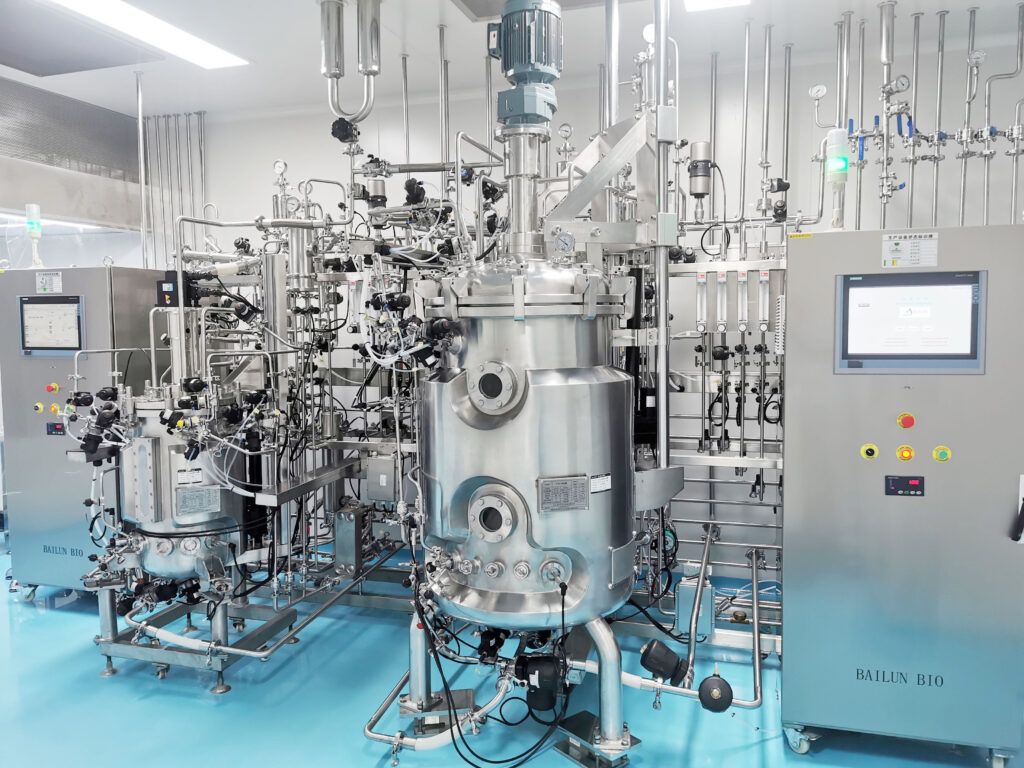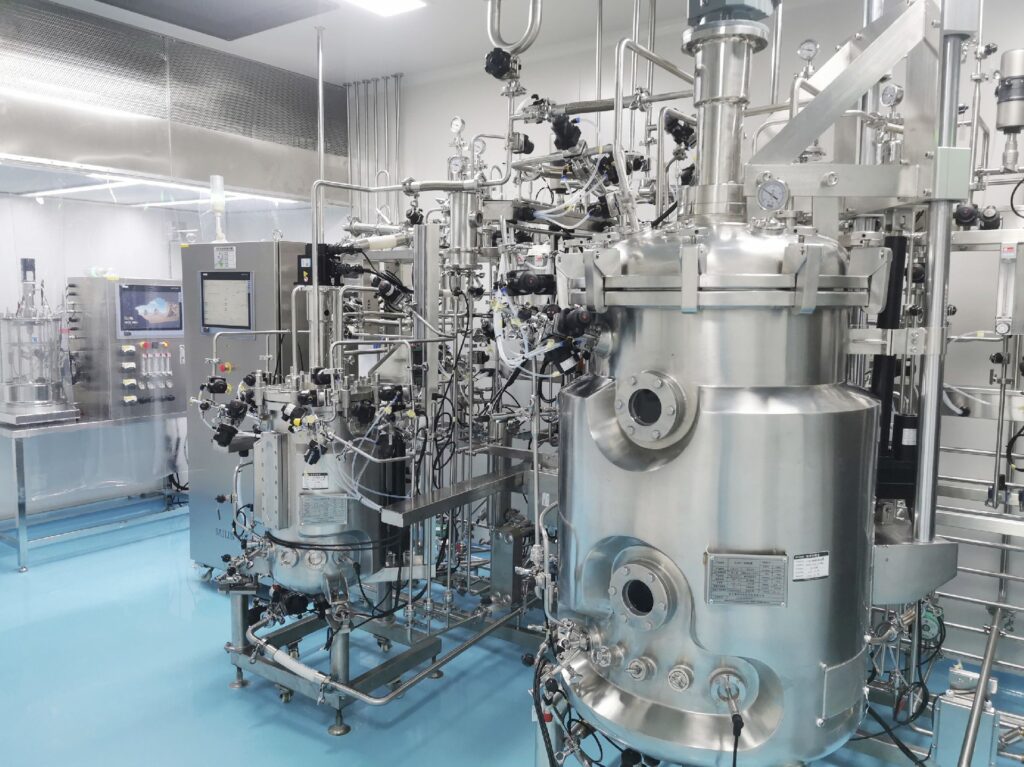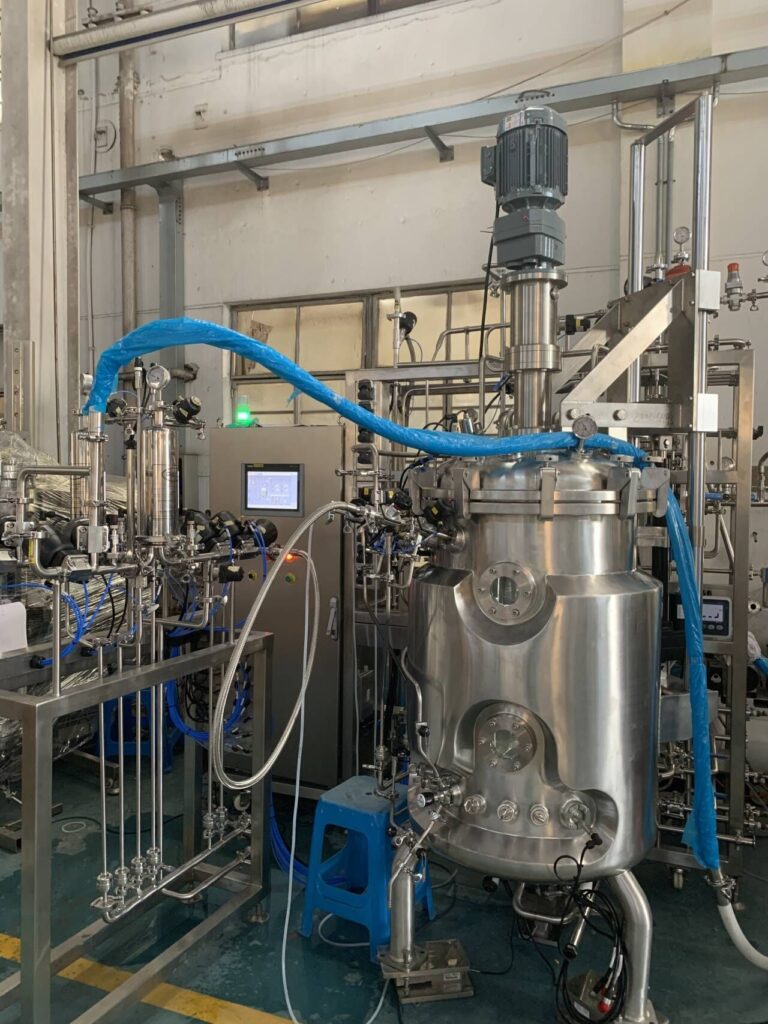
In this blog, we’ll look into “What are mammalian cells?” and explore how they mold us, how they’re examined in laboratories, and why they are the key to so many medical and technological advancements.
Get ready for an amazing ride as we uncover how mammalian cells are grown and how they handle everything from protein synthesis to gene expression.
What are Mammalian Cells: Understanding the Foundation of Life
So, what are mammalian cells? At their core, mammalian cells are the basic structural and functional building blocks of mammals, including humans! Every cell is its entity, with its own miniature power plants, control centers, and specialized equipment that cooperate to keep our bodies functioning.
Within the mammalian cell, you’ll find a nucleus (think of it as the command center) which contains the genetic material (DNA). You’ll also find an active cytoplasm full of organelles, such as mitochondria, which are our sources of energy, and a cell membrane that shields everything within. These traits distinguish mammalian cells, enabling them to carry out complex tasks.
How Mammalian Cells Grow: An Inside Look at Mammalian Cell Culture
In order to investigate mammalian cells outside the body, scientists cultivate them in a regulated setting through a process known as cell culture.
Imagine a laboratory where scientists create the perfect conditions for cells to thrive. A lab with all the necessary nutrients, temperature, and pH balance. There are two main types of cell culture: adherent cultures and suspension cultures.
- Adherent cultures: In this method, cells are placed on a solid surface such as a petri dish where they attach and can grow outwards. This arrangement simulates how some cells including the fibroblasts and epithelial cells develop in the body.
- Suspension cultures: Here the cells are able to move around freely in a medium. This type of culture is useful for non-adherent cells such as blood cells.
Despite the usefulness, cell culture is not always easy. Issues such as cell culture contamination are common. For instance, viral pathogens, bacterial or fungal contamination may destroy a whole batch.
If you have ever seen cell culture contamination images, you know how annoying this may be for scientists.
Cell culture can be tricky, with common issues like circular contamination in cell culture causing headaches.
Fungal contamination in cell culture is quite resistant and frequently needs special care. Despite these obstacles, cell cultures are particularly useful for researching pharmacological responses, and cell behavior, and answering what are mammalian cells under different circumstances.

Visualizing Mammalian Cells: How Imaging Brings Them to Life
Now, how can we see mammalian cells in action? This is where mammalian cell imaging comes in! Through powerful microscopes, researchers can capture highly detailed images of cells, helping them observe everything from cellular shape to protein interactions.
Techniques like fluorescence and confocal microscopy allow scientists to highlight specific parts of the cell in vivid colors, making it easier to understand what are mammalian cells and how they work.
Imaging isn’t just about pretty pictures. It is a critical tool for tracking cellular health and confluency (the density of cells covering a surface). Cell confluency measurements tell scientists when cells are healthy and ready for experiments, making imaging essential for cell-based research.
Types of Mammalian Cells: The Diverse Builders of Life
When we think of cells, it’s easy to picture them as tiny identical units floating around. But mammalian cells are incredibly diverse, each type tailored to a specific job in the body.
From the cells lining your skin to the neurons firing in your brain, each one has its own unique shape, structure, and purpose.
Let’s explore these different types and uncover how each plays a role in keeping us alive and well, helping us fully grasp the bigger picture — what are mammalian cells?
Primary categories of mammalian cells
1. Epithelial cells: The body’s protective shield
Think of epithelial cells as your body’s personal armor. These cells line your organs, skin, and blood vessels, forming protective barriers that keep the inside safe from the outside.
Epithelial cells aren’t just about protection. They’re also busy at work, absorbing nutrients in your gut, secreting hormones, and even producing sweat. Their role in creating protective barriers also helps prevent pathogens from invading, making them crucial for immune defense.
These cells come in various shapes and forms, adapting to different functions. Some are thin and flat (perfect for covering surfaces). Others are tall and cylindrical (great for absorption and secretion).
2. Connective tissue cells: The body’s support team
When it comes to holding the body together, connective tissue cells are the champions. They include fibroblasts, which produce collagen and elastin to keep your skin firm and your tissues resilient, as well as adipocytes, better known as fat cells. Adipocytes store energy and cushion organs.
Connective cells also play a huge role in wound healing and tissue repair by producing proteins and fibers that support cellular regeneration.
Connective tissue cells are diverse, encompassing not just fat cells but also cartilage, bone, and blood cells. They maintain everything from skin elasticity to bone strength, making them essential for both structure and health.
3. Nerve cells (Neurons): The body’s communication network
Ever wonder how you can feel the softness of a cat’s fur or the warmth of a sunny day? That’s all thanks to nerve cells that transmit electrical signals throughout the nervous system.
These cells are incredibly specialized. They have long, branching arms called dendrites and axons that allow them to connect with other cells across vast distances.
Neurons are built to communicate—whether it’s telling your muscles to move, processing information in the brain, or delivering sensory signals from the skin. They’re constantly sending and receiving signals, making them essential for every thought, movement, and sensation.
4. Muscle cells: The body’s movers and shakers
When you walk, blink, or even pump blood through your heart, muscle cells are behind every move. These cells are specialized for contraction, with different types suited to unique functions:
- Skeletal muscle cells: Responsible for voluntary movements, like lifting a cup or running.
- Cardiac muscle cells: Found only in the heart. These cells keep blood flowing with each heartbeat.
- Smooth muscle cells: Located in organs like the intestines and blood vessels, smooth muscles work involuntarily to move substances along pathways.
Muscle cells are powerhouses packed with proteins that allow them to expand and contract, giving them the unique ability to turn chemical energy into motion.
Specialized types of mammalian cells
While primary cells are busy with their core duties, specialized mammalian cells take on even more complex tasks. Let’s look at two notable types that have made headlines in science.
1. Stem cells: The body’s master builders
Stem cells are like the “all-in-one” blueprint cells. They have the amazing ability to transform into any other type of cell in the body. This is why they’re central to regenerative medicine and tissue engineering.
There are different types of stem cells:
- Embryonic stem cells are pluripotent. This means they can become any cell type, including brain cells to skin cells.
- Induced pluripotent stem cells (iPSCs) are reprogrammed from adult cells to regain this “blank slate” potential. This breakthrough allows scientists to create patient-specific cells for research without the ethical concerns associated with embryonic cells.
Imagine being able to repair damaged heart tissue or regenerate spinal cord cells all thanks to the regenerative potential of stem cells.
2. Immortalized cell lines: The research workhorses
Unlike regular cells that have a limited lifespan, immortalized cell lines can divide indefinitely. Often derived from cancerous tissues or genetically modified to overcome the natural limit on cell divisions, these cell lines are incredibly valuable in research.
For example, HeLa cells, one of the most famous cell lines. They were derived from a cervical cancer patient in the 1950s and are still widely used in research today.
These cells allow scientists to conduct long-term studies on everything from drug effects to genetic mutations.

Since immortalized cells can be cultured endlessly, they’re perfect for producing therapeutic proteins on a large scale. For example, the proteins used in cancer and autoimmune disease treatments.
Role of Mammalian Cells in Modern Medicine
Mammalian cells aren’t just research subjects. They’re also at the forefront of medical treatments and drug development.
1. Regenerative medicine: repairing and rebuilding tissues
In regenerative medicine, the spotlight often shines on stem cells. These versatile cells have the unique ability to become nearly any other type of cell. This means they can be used to repair damaged tissues or even grow new organs.
Imagine replacing heart tissue after a heart attack or repairing damaged spinal cords after an injury. These are the kinds of goals regenerative medicine aims to achieve.
By guiding stem cells to become specific cell types, researchers are paving the way for treatments that could one day make tissue and organ transplants a thing of the past.
For sophisticated mammalian cell-based regenerative and aesthetic treatments, non-surgical PDO threads provide a cutting-edge, non-surgical solution for skin tightening and collagen stimulation.
2. Cancer research
Cancer is one of the most challenging diseases to treat, partly because it varies so much from one person to another. Mammalian cell lines derived from cancerous tissues allow scientists to explore cancer mechanisms in a controlled setting.
By studying how cancer cells grow, divide, and respond to treatments, researchers can develop therapies that target cancer at the molecular level. To better understand these processes, researchers often measure gene expression levels within cancer cells to see how certain genes may drive cancer growth or respond to therapies.
Techniques on how to measure gene expression such as RT-qPCR or Western blotting help provide insights into which treatments may be effective for specific cancer types.
3. Drug development: Testing treatments before they reach people
Before any new drug reaches human clinical trials, it goes through rigorous testing on mammalian cells. These cells serve as the body’s first defense, enabling scientists to examine the potential effects of medication on human tissue without using real human patients.
With cell models, one can measure the effectiveness and safety of a drug in the early stages, eliminating those that are dangerous or ineffective. This process also includes the use of calcium phosphate transfection. This is a process through which DNA is inserted into the cells to enable researchers study the effect of drugs on genes.
But how does calcium phosphate transfection work? It depends on the chemical interaction of DNA in a buffered solution with calcium chloride, allowing DNA to enter the cell and start altering the expression of certain genes.
The Role of Mammalian Cells in Research
In research, mammalian cell-based assays are among the most fascinating. These assays measure gene expression, protein synthesis, and cellular responsiveness, enabling researchers to assess how cells respond to various medications.
By using methods like calcium phosphate transfection, scientists can introduce additional DNA into cells to investigate the behaviors of specific genes. This is essential for genetic research and drug development and helps us to get a clearer picture of what are mammalian cells in action.
Another critical area of use is in the synthesis of therapeutic proteins commonly called protein cells. Most human therapeutic proteins are produced using mammalian cells. They encompass products such as monoclonal antibodies, useful in the treatment of cancer and many other ailments.
To facilitate vaccine production, Bailun’s vaccine Bioreactor (GMP) offers a sophisticated GMP-compliant system for growing mammalian cells under strict guidelines,which is necessary to create safe and efficient vaccines.
The capacity to cultivate mammalian cells and regulate their protein synthesis has transformed healthcare, leading to tailor-made therapies for impaired patients.
For high-demand research, devices such as BaiLun’s High-Throughput Micro-Bioreactor are crucial in carrying out effective, concurrent assays. This makes them ideal tools in labs that focus on drug testing and gene expression.
Advancements and Ethical Considerations
1. Technological innovations: Building organs in a lab?
In recent years, bioengineering has pushed the boundaries of what mammalian cells are capable of. Advances in 3D cell culture and bioengineering have led to the creation of organoids—miniature versions of organs grown in the lab.
These advancements allow scientists to conduct more accurate studies on organ function, drug interactions, and disease progression.
2. Ethics: Walking the line between innovation and responsibility
Tremendous power carries a tremendous deal of responsibility, and cell research is no exception. The application of stem cells, particularly embryonic stem cells, has brought up moral concerns regarding the source of these cells and the consequences of altering them.
In elaborating on what are mammalian cells, investigating induced pluripotent stem cells (iPSCs) as a viable substitute is one ethical approach we might take.
iPSCs are adult cells that scientists have “reprogrammed” to behave like embryonic stem cells, providing a promising alternative that avoids the ethical issues tied to embryonic cells.
As the technology advances, iPSCs could replace the need for embryonic stem cells, allowing scientists to continue research without ethical compromises.
Regarding genetic engineering, methods like CRISPR also make us wonder how far we should go. There is an indication that editing genes in mammalian cells can be a major step towards advancements in the field of medicine. However, because of the risk of abuse, stringent regulations are necessary to guarantee moral behavior.
Conclusion: The Endless Potential of Mammalian Cells
So, what are mammalian cells? They’re more than just cellular units. They’re the backbone of biological research and the keystone of life itself. From advancing regenerative medicine to creating effective cancer treatments, these cells hold endless possibilities for the future of health and science.
Through innovations in cell imaging, culture techniques, and genetic manipulation, we’re only beginning to unlock the secrets of mammalian cells.
Whether you’re a budding biologist, a researcher, or someone passionate about science, understanding mammalian cells is a journey that could one day change the world. Who knows, maybe the next breakthrough in medicine is already brewing inside a lab-grown dish of mammalian cells!
Optimize Your Cell Research with Precision
Ready to elevate your mammalian cell research? BaiLun Biotechnology’s Mammalian Cell Culture Bioreactors are designed with advanced technology to provide the perfect environment for your cell cultures—offering precision, scalability, and exceptional control over your cell growth conditions.
Whether you’re producing therapeutic proteins, developing vaccines, or pioneering regenerative medicine, our bioreactors deliver reliable performance and optimal conditions to meet your research needs.
